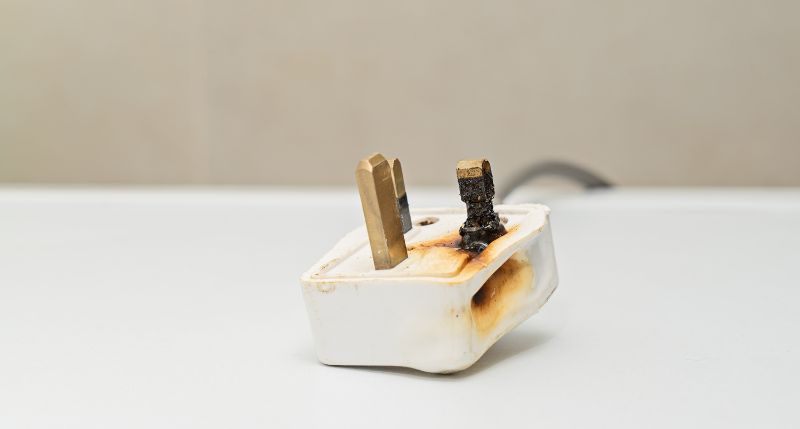-
Business Services ▾
-
Company & Commercial
- Legal Services for Landlords
- Commercial Property
-
Employment Law
- - Sponsor Licences
- - Employment law solicitors and HR training UK
- - Employment Tribunals Advice
- - HR Consultancy
- - Discrimination and Family Issues in the Workplace
- - Restrictive Covenants
- - Drafting and Varying Contracts of Employment
- - Redundancies and Restructuring
- - Disciplinary Hearings, Dismissals and Grievances
- - Trade Unions and Industrial Action
- - TUPE Guidance
- Commercial Litigation
-
Legal Compliance
- Debt Recovery
- Business Recovery & Insolvency
-
Company & Commercial
-
Individual Services ▾
- Residential Property
- Public Law
- Family & Matrimonial
- Children Law
-
Clinical Negligence
- - Abuse and neglect of the elderly
- - Fracture Negligence
- - Surgical Negligence
- - GP Negligence
- - Gynaecological Claims
- - Medication and Prescription Error Advice
- - Paediatric Claims
- - Orthopaedic Negligence
- - Physiotherapy or chiropractic treatment errors
- - Ophthalmic Eye Claims
- - Cancer Misdiagnosis Claim
- - Pressure Sores
- - Inquest Representation
- - Cauda Equina Syndrome Compensation
- - Anaesthetic Awareness – Administration Mistakes
- - Birth Injuries
- - Cosmetic Surgery Mistakes
- - Negligent Cardiac Care Claims
- - Cerebral Palsy
- - Chiropractic Injury
- - Colorectal Surgery
- - Consent to Treatment
- - Dental Negligence
- - Ear, Nose and Throat
- - Sepsis
- - Personal Injury
- Wills & Probate
- Dispute Resolution
-
Sports Law
- Employment Law
-
UK COVID-19 Inquiry
- LGBTQ+ Legal Advice
15th December 2024 | Consumer Law | Personal Injury
What Is A Faulty Product Injury Claim?
Defective product injuries can be a real setback...


If you’ve been injured by a faulty product, it can be a distressing experience, both physically and emotionally. In addition to dealing with the pain and inconvenience of your injury, you may face financial burdens due to lost wages, medical bills, or the need for ongoing care.
Though it cannot take away the pain of the injury itself, you may be entitled to compensation if a defective product has caused you harm.
We’ll cover more about faulty product injury claims below, as well as how a solicitor can help you pursue a compensation claim.
Understanding Defective Product Injuries
If you’ve been injured by a product you believe to be defective, The Consumer Rights Act 2015 provides a legal avenue for seeking compensation from the manufacturer or supplier.
A product is considered defective if its safety fails to meet the reasonable expectations of consumers. This means that if a product poses a danger that an average person wouldn’t anticipate, it may be deemed unsafe under the law.
To assess what consumers can reasonably expect from a product’s safety, all relevant factors are considered, including:
- How the product has been promoted and advertised.
- The presence of any warnings or labels linked with the product, including instructions concerning its use or precautions.
- What consumers might reasonably anticipate doing with the product, or how it might be used.
Types of Product Liability Issues
Here are some examples of product liability issues that may lead to injury or harm:
1. Manufacturing Defects
These occur when a product deviates from its intended design or quality during production. These defects typically occur due to errors in the manufacturing stage, leading to the product being unsafe to use.
Examples include faulty assembly, the use of substandard materials, or malfunctions in machinery causing fitting issues in the final product. As a result, the product may not meet product safety standards, leading to potential hazards for the consumer.
2. Poor Design
A product with a flawed design can pose significant safety risks, even if it is manufactured correctly.
Design defects are those that make a product inherently dangerous when used as it was intended. For example, a car seat that lacks proper padding or doesn’t secure a child adequately during a crash would be considered a design flaw.
Poor design claims are often based on the fact that the product, in its intended form, could have been designed more safely to prevent harm.
3. Insufficient Warnings or Instructions
When a product lacks proper warnings or clear instructions, consumers may not be fully aware of the risks involved in using it. Insufficient product labelling or unclear warnings can lead to dangerous misuse, resulting in injuries.
For example, if a cleaning product doesn’t provide adequate safety instructions or cautionary labels about its toxic ingredients, users may unknowingly expose themselves to harm.
Claims based on insufficient warnings or instructions argue that the manufacturer failed to properly communicate the potential dangers of the product, making it unsafe for consumers.
4. Failure to Recall a Dangerous Product
If a company learns that one of its products poses a safety hazard, it has a responsibility to take immediate corrective action. This may involve providing updated instructions, modifying the product, or requesting that customers stop using it and return it for a refund.
The company is also obligated to notify all affected consumers, ensuring they are aware of the risk and know the steps they need to take. Failing to carry out dangerous product recalls puts consumers at risk, which may result in the company being held accountable for any harm caused by its negligence.
Claims Under The Consumer Rights Act
If you have experienced a faulty product injury, you can make a claim for breach of contract under the Consumer Rights Act 2015.
When making a claim for breach of contract under the Act, you can only bring the action against the party you contracted with, typically the seller, or another party specifically identified in the contract.
The Consumer Rights Act is critical in this context as it incorporates several terms into the contract, including:
- The product must match its description.
- The product must be of satisfactory quality.
- The product must be fit for its intended purpose.
If you can prove that the seller breached any of these terms, you may be entitled to claim compensation for any losses or harm resulting from that breach.
Collecting Evidence For Your Claim
As the Claimant will need to prove a breach of duty, it can be useful to gather and retain the following evidence:
- The defective product itself
- Any receipts or proof of purchase
- Photographs documenting the injury
These items can help demonstrate the connection between the defect and the harm caused, strengthening your case.
Time Limits For Filing A Claim For A Defective Product
To bring a product liability claim under the Consumer Rights Act 2015, you generally have 6 years from the date of the product purchase to bring a claim for breach of contract.
Additionally, the Limitation Act 1980 introduces a 10-year ‘longstop’ rule for defective product injury claims. This means that claims for personal injury caused by a defective product must be filed within 10 years from the date the product was first available on the market.
How We Can Help
At Harding Evans, we understand the impact defective product injuries can have on your life. If you’ve suffered an injury due to a defective product, our personal injury solicitors can help you pursue a claim for compensation.
From gathering detailed evidence, including medical records and expert opinions, to liaising with the manufacturer, seller or importer of the defective product, and negotiating on your behalf, our team is committed to securing the compensation you deserve.
To discuss your circumstances in more detail, get in touch with our expert solicitors today.












